Newspaper Style Journalistic Style Newspaper

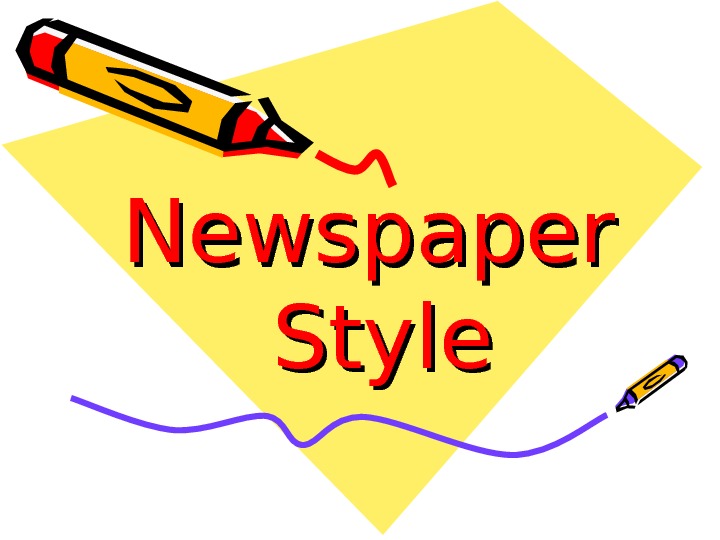




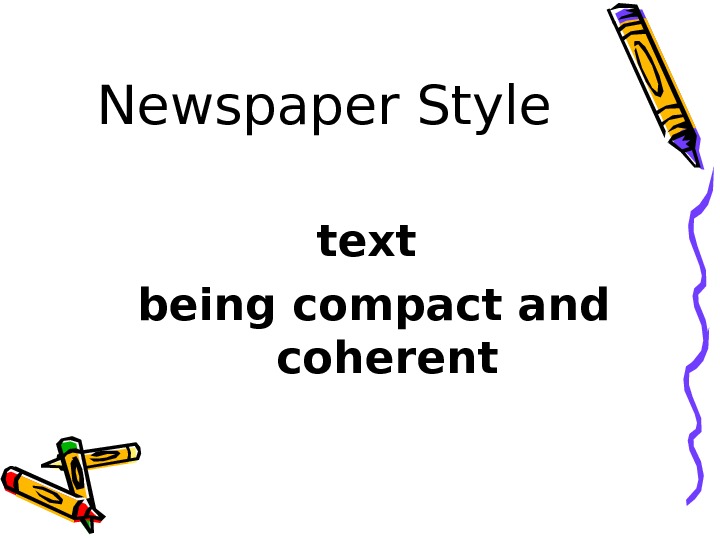
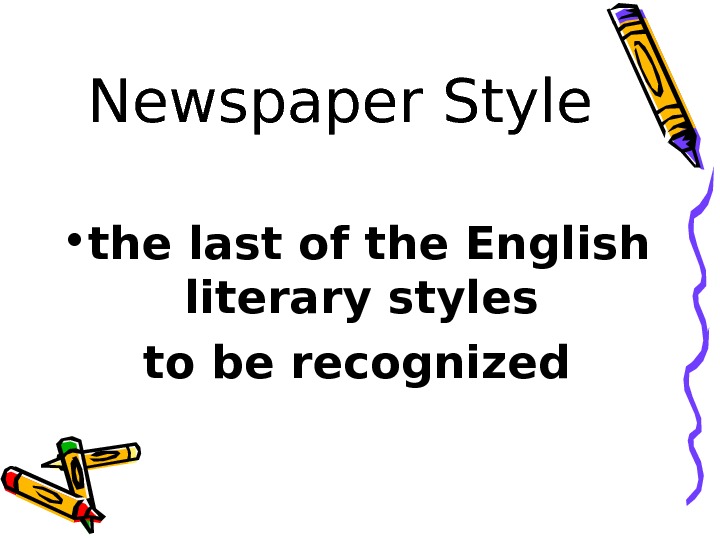

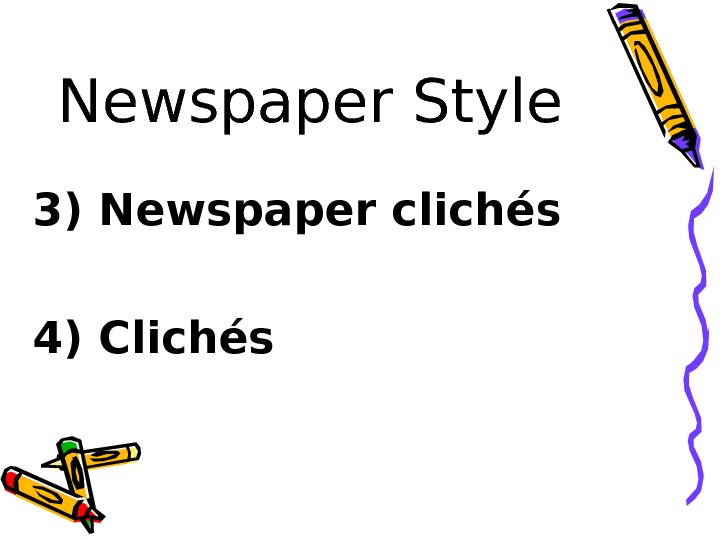





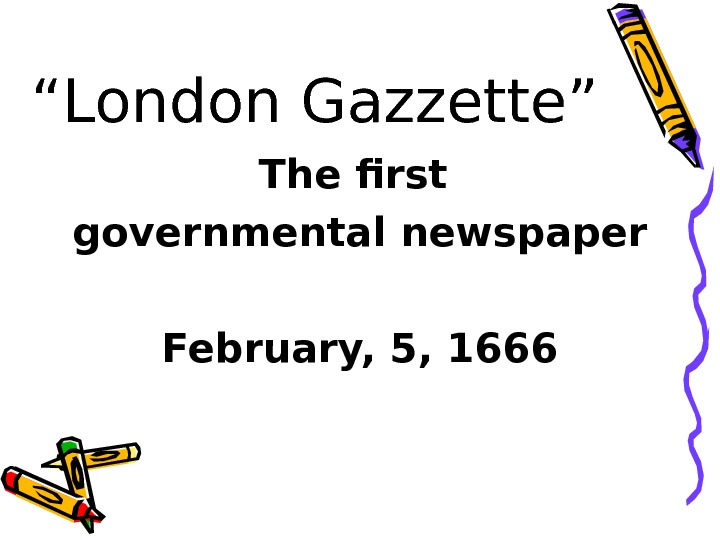


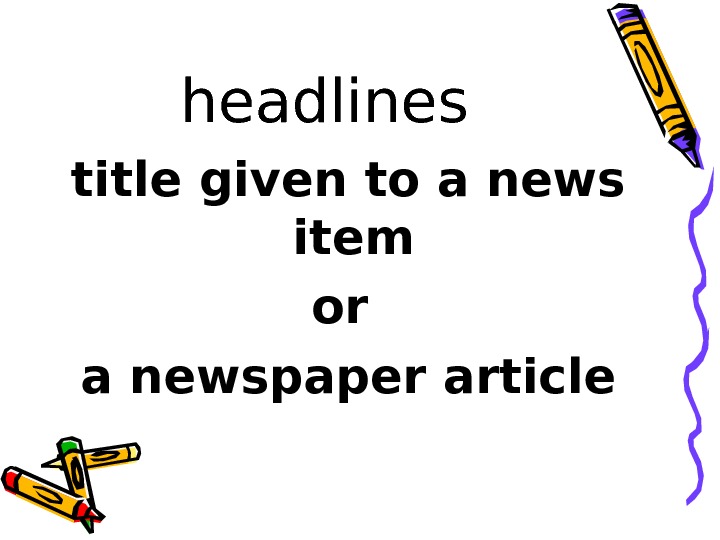








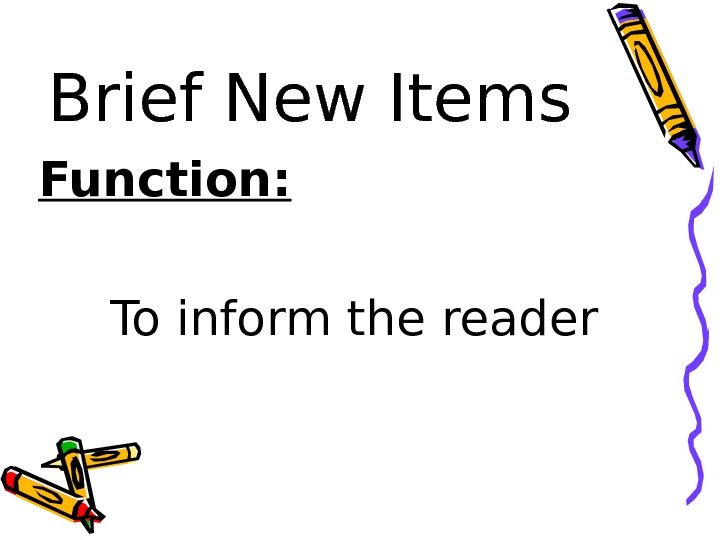


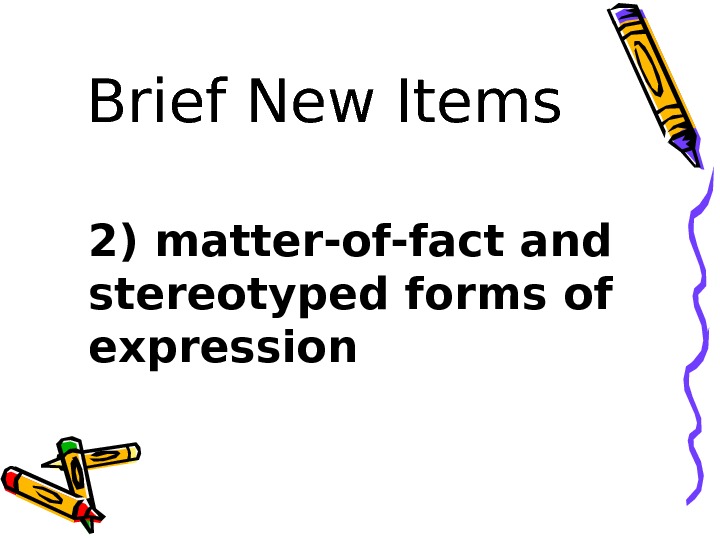


















- Размер: 91.5 Кб
- Количество слайдов: 48
Описание презентации Newspaper Style Journalistic Style Newspaper по слайдам
 Newspaper Style
Newspaper Style
 Journalistic Style
Journalistic Style
 Newspaper Style • purposeful and thematic arrangement of interrelated lexical, phraseological and grammatical language means as a separate unity
Newspaper Style • purposeful and thematic arrangement of interrelated lexical, phraseological and grammatical language means as a separate unity
 Newspaper Style that basically serves the purpose of informing and instructing the reader in order to bring up-to-date, accurate, convincing information on current affairs
Newspaper Style that basically serves the purpose of informing and instructing the reader in order to bring up-to-date, accurate, convincing information on current affairs
 Newspaper Style D. Crystal: “… present a wider range of linguistically distinctive varieties than any other domain of language study”.
Newspaper Style D. Crystal: “… present a wider range of linguistically distinctive varieties than any other domain of language study”.
 Newspaper Style text being compact and coherent
Newspaper Style text being compact and coherent
 Newspaper Style • the last of the English literary styles to be recognized
Newspaper Style • the last of the English literary styles to be recognized
 Newspaper Style Features: 1) Special political and economic terms 2) Non-term political vocabulary
Newspaper Style Features: 1) Special political and economic terms 2) Non-term political vocabulary
 Newspaper Style 3) Newspaper clichés 4) Clichés
Newspaper Style 3) Newspaper clichés 4) Clichés
 Newspaper Style 5) Abbreviations of various types as it helps to save space and time
Newspaper Style 5) Abbreviations of various types as it helps to save space and time
 Newspaper Style read as individual letters : WHO World Health Organisation
Newspaper Style read as individual letters : WHO World Health Organisation
 Newspaper Style NATO /’neitou/ North Atlantic Treaty Organisation OPEC /’oupek/ Organisation of Petroleum Exploring Countries acronyms
Newspaper Style NATO /’neitou/ North Atlantic Treaty Organisation OPEC /’oupek/ Organisation of Petroleum Exploring Countries acronyms
 Newspaper Style 6) Abundant use of Neologisms (Gorbymania)
Newspaper Style 6) Abundant use of Neologisms (Gorbymania)
 “ Weekly News” First English Newspaper May, 23,
“ Weekly News” First English Newspaper May, 23,
 “ London Gazzette” The first governmental newspaper February, 5,
“ London Gazzette” The first governmental newspaper February, 5,
 “ Daily Courants” First English daily newspaper March, 11,
“ Daily Courants” First English daily newspaper March, 11,
 Earliest English Newspapers Absence of any comments
Earliest English Newspapers Absence of any comments
 headlines title given to a news item or a newspaper article
headlines title given to a news item or a newspaper article
 headlines Function: to catch the readers’ attention and at the same time
headlines Function: to catch the readers’ attention and at the same time
 headlines to provide brief information what the news that follows is about
headlines to provide brief information what the news that follows is about
 headlines Features : as few words as possible the words tend to be short and sound dramatic
headlines Features : as few words as possible the words tend to be short and sound dramatic
 headlines Concise syntax • Full declarative sentences • Interrogative sentences • Rhetoric questions
headlines Concise syntax • Full declarative sentences • Interrogative sentences • Rhetoric questions
 headlines • Nominative sentences • Elliptical sentences a) auxiliary verb omitted b) subject omitted c) subject and part of the predicate omitted
headlines • Nominative sentences • Elliptical sentences a) auxiliary verb omitted b) subject omitted c) subject and part of the predicate omitted
 headlines Phrases with verbals a) infinitive standing for “going to happen” b) participial and gerundial constructions
headlines Phrases with verbals a) infinitive standing for “going to happen” b) participial and gerundial constructions
 headlines • Use of direct speech • Emotive syntax and vocabulary suggestive or approval or disapproval • Allusive use of self-expressions and sayings
headlines • Use of direct speech • Emotive syntax and vocabulary suggestive or approval or disapproval • Allusive use of self-expressions and sayings
 headlines • Deformation of special terms • Use of stylistic devices producing strong emotional effect
headlines • Deformation of special terms • Use of stylistic devices producing strong emotional effect
 Brief New Items Function: To inform the reader
Brief New Items Function: To inform the reader
 Brief New Items state facts without giving explicit comments
Brief New Items state facts without giving explicit comments
 Brief New Items Features: 1) absence of any individuality of expression and lack of emotional colouring
Brief New Items Features: 1) absence of any individuality of expression and lack of emotional colouring
 Brief New Items 2) matter-of-fact and stereotyped forms of expression
Brief New Items 2) matter-of-fact and stereotyped forms of expression
 Brief New Items 3) peculiar syntactical structure as the reporter is obliged to be brief: a) complex sentences with a developed system of clauses
Brief New Items 3) peculiar syntactical structure as the reporter is obliged to be brief: a) complex sentences with a developed system of clauses
 Brief New Items b) verbal constructions (infinitive, participial, gerundial); and verbal noun constructions
Brief New Items b) verbal constructions (infinitive, participial, gerundial); and verbal noun constructions
 Brief New Items c) syntactical complexes, esp. the nominative with the infinitive, used to avoid mentioning the source of information
Brief New Items c) syntactical complexes, esp. the nominative with the infinitive, used to avoid mentioning the source of information
 Brief New Items d) attributive noun groups e) special word order f) occasional disregard for the sequence of tenses rule
Brief New Items d) attributive noun groups e) special word order f) occasional disregard for the sequence of tenses rule
 Advertisements & Announcements Function: to inform the reader
Advertisements & Announcements Function: to inform the reader
 Advertisements & Announcements • classified • non-classifie d
Advertisements & Announcements • classified • non-classifie d
 Advertisements & Announcements Classified: birth marriages death in memoriam business offers
Advertisements & Announcements Classified: birth marriages death in memoriam business offers
 Advertisements & Announcements Features: • mostly neutral vocabulary with rare usage of emotionally coloured words or phrases used with the only purpose of attracting readers’ attention
Advertisements & Announcements Features: • mostly neutral vocabulary with rare usage of emotionally coloured words or phrases used with the only purpose of attracting readers’ attention
 Advertisements & Announcements • fixed, often elliptical, pattern • telegram-like statements, with articles and punctuation marks omitted
Advertisements & Announcements • fixed, often elliptical, pattern • telegram-like statements, with articles and punctuation marks omitted
 Advertisements & Announcements Non-classified the variety of language forms and subject-matters
Advertisements & Announcements Non-classified the variety of language forms and subject-matters
 Articles • Feature article • Reports • Editorials
Articles • Feature article • Reports • Editorials
 Articles Function: to influence the reader by giving an interpretation of certain facts
Articles Function: to influence the reader by giving an interpretation of certain facts
 Articles Features: • combination of different vocabulary strata
Articles Features: • combination of different vocabulary strata
 Articles • usage of emotionally coloured language elements, both lexical and structural
Articles • usage of emotionally coloured language elements, both lexical and structural
 Articles • accepted usage of colloquial words and expressions, slang, and professionalisms
Articles • accepted usage of colloquial words and expressions, slang, and professionalisms
 Articles • usage of various stylistic devices but trite and traditional in nature
Articles • usage of various stylistic devices but trite and traditional in nature
 Articles traditional periphrases, Wall Street (American financial circles), Downing Street (the British Government), Fleet Street (the London press), the third world (the remnant of the dated division of the world into three parts – socialist, capitalist and developing countries)
Articles traditional periphrases, Wall Street (American financial circles), Downing Street (the British Government), Fleet Street (the London press), the third world (the remnant of the dated division of the world into three parts – socialist, capitalist and developing countries)
 Articles • genuine stylistic means also possible, but comparatively rare
Articles • genuine stylistic means also possible, but comparatively rare

